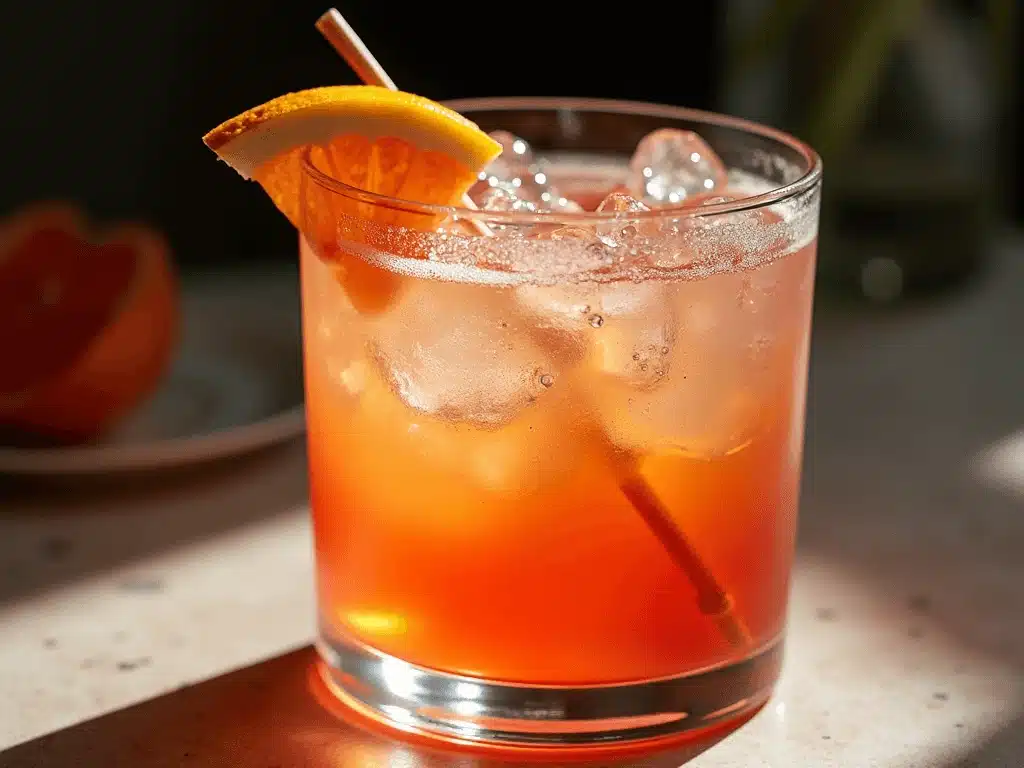Table of Contents
Difficulty Level: ⭐ Very Easy
Introduction
As the sun stretches its golden rays across the patio and the gentle breeze carries the promise of summer, there’s nothing quite like the crisp, effervescent delight of a perfectly crafted Hugo Spritz to elevate the moment. This enchanting cocktail, with its delicate balance of floral elderflower, bubbly prosecco, and refreshing mint, has become the drink of choice for those seeking a lighter, more aromatic alternative to the classic Aperol Spritz.
The Hugo Spritz recipe combines the effervescence of prosecco with the subtle sweetness of elderflower liqueur, creating a symphony of flavors that dance on your palate. Each sip offers a refreshing escape, transporting you to the sun-drenched terraces of Northern Italy where this cocktail first gained popularity. The beauty of the Hugo Spritz lies in its simplicity – a harmonious blend of just a few quality ingredients that come together to create something truly magical.
What makes this cocktail particularly appealing is its versatility. Whether you’re hosting a sophisticated summer soirée, enjoying a quiet evening on the balcony, or simply looking to elevate your weekend brunch, the Hugo Spritz fits seamlessly into any occasion. Its light, refreshing profile makes it perfect for warm weather, while the aromatic elderflower notes provide enough complexity to satisfy even the most discerning cocktail enthusiasts.
The visual appeal of a Hugo Spritz is undeniable – served in a large wine glass filled with ice, the pale golden liquid sparkles invitingly, while fresh mint leaves and lime slices add vibrant pops of color. As you bring the glass to your lips, the aromatic bouquet of elderflower and mint creates an enticing prelude to the first sip. The initial taste is bright and bubbly, with the floral sweetness of elderflower perfectly balanced by the crisp dryness of prosecco and the subtle zing of lime.
Unlike its more bitter cousin, the Aperol Spritz, the Hugo offers a gentler, more floral flavor profile that appeals to a wide range of palates. It’s a cocktail that feels simultaneously sophisticated and approachable – complex enough to impress your guests, yet simple enough to prepare without any specialized bartending skills. In fact, the Hugo Spritz has become so popular precisely because it strikes this perfect balance between elegance and accessibility.
Recipe History
The Hugo Spritz, despite its current international popularity, has relatively recent origins compared to many classic cocktails. This refreshing concoction was born in 2005 in the small town of Naturno (Naturns) in South Tyrol, a bilingual region in Northern Italy that borders Austria. The creator, bartender Roland Gruber, developed the drink as an alternative to the ubiquitous Aperol Spritz that dominated the Italian aperitivo scene.
Interestingly, the cocktail wasn’t always called “Hugo.” According to several accounts, Gruber initially named his creation “Otto,” but later changed it to “Hugo” simply because he preferred the sound of it. The name has no particular significance beyond the creator’s personal preference, yet it has become synonymous with this delightful summer refreshment.
The original Hugo Spritz recipe actually featured lemon balm syrup rather than elderflower. However, as the drink gained popularity and spread beyond South Tyrol, elderflower syrup (and later elderflower liqueur such as St. Germain) became the standard ingredient, largely due to its wider availability and its complementary flavor profile with the other components of the cocktail.
The Hugo Spritz quickly captured the hearts of drinkers throughout the Triveneto region of Italy before spreading to neighboring Austria, Switzerland, and Germany. By the 2010s, it had established itself as a staple in European cocktail culture. The drink’s rise to international fame accelerated in recent years, particularly through social media platforms like TikTok, where videos featuring the Hugo Spritz have garnered millions of views, cementing its status as a “drink of the summer” for many.
What makes the Hugo Spritz culturally significant is how it represents the evolving nature of the Italian aperitivo tradition. While respecting the spritz format that has been beloved in Northern Italy for generations, it introduces new flavors that reflect changing tastes and preferences. The Hugo embodies the Alpine spirit of its birthplace – refreshing, aromatic, and with a certain mountain freshness that sets it apart from the more bitter Mediterranean-inspired aperitifs.
Today, the Hugo Spritz has transcended its Alpine origins to become a global phenomenon, appearing on cocktail menus from Paris to New York. Various brands of elderflower liqueur, particularly St. Germain, have become closely associated with the cocktail, helping to spread its popularity while also benefiting from its rise to prominence. The Hugo Spritz stands as a testament to how a simple innovation in a traditional format can create something truly special that resonates across cultures and continents.
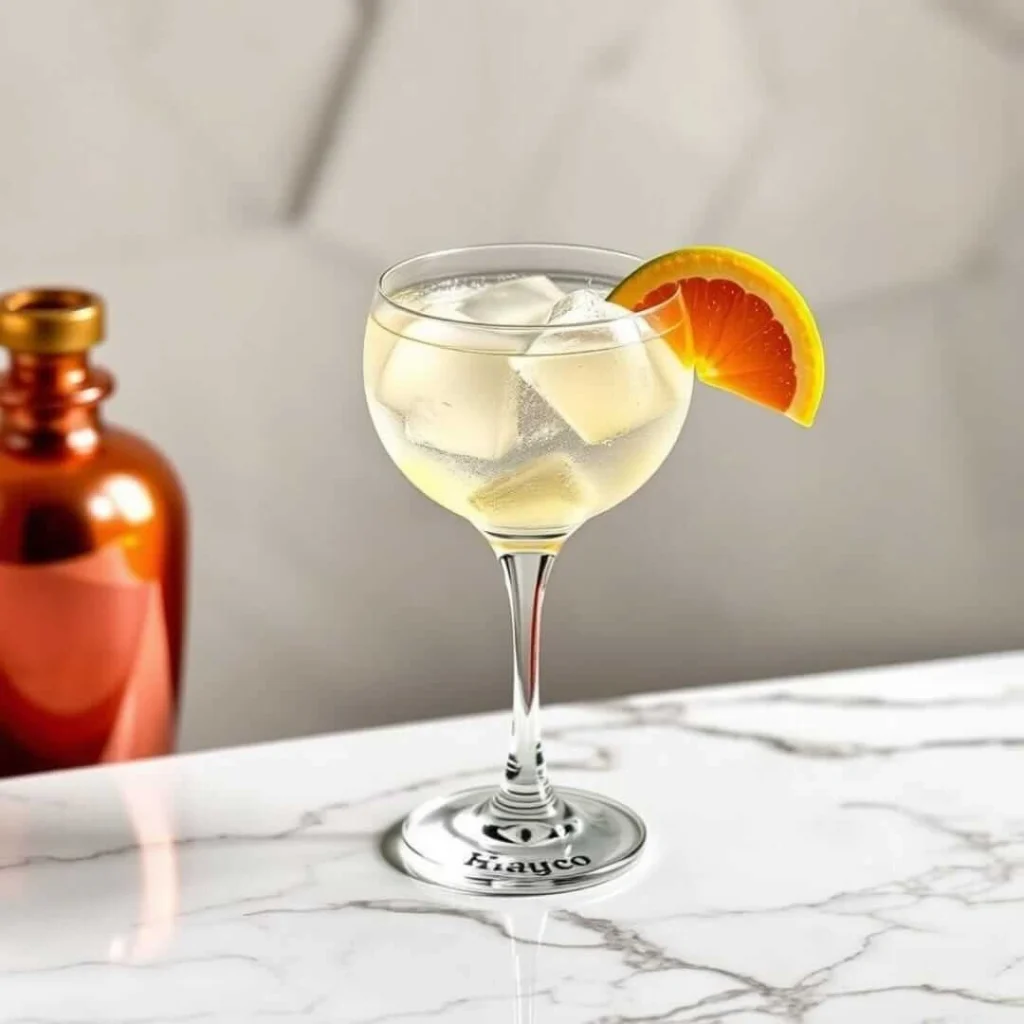
Full Ingredient List
To craft the perfect Hugo Spritz, you’ll need the following ingredients:
- Elderflower Liqueur: Use a high-quality elderflower liqueur such as St-Germain or St. Elder. If you prefer a lighter version, you can substitute with elderflower syrup, though you may need to adjust the amount to taste.
- Prosecco: Opt for a dry, high-quality Prosecco like LaMarca. You can also use other sparkling wines such as Spanish Cava or French Champagne if Prosecco is not available.
- Sparkling Water: Club soda or seltzer water works well. For added flavor, try using lime or elderflower-flavored sparkling water.
- Fresh Mint Leaves: Fresh mint is essential for the aromatic and visual appeal of the Hugo Spritz. Choose leaves with a deep green color.
- Lime Slices: Use fresh lime slices for garnish. You can also substitute with lemon slices if preferred.
- Ice Cubes: Use plenty of ice to keep your Hugo Spritz chilled and refreshing.
Substitutions and Variations
- Elderflower Syrup: If you can’t find elderflower liqueur, use elderflower syrup. You may need to adjust the amount based on taste.
- Non-Alcoholic Version: Replace Prosecco with non-alcoholic sparkling wine or club soda, and use elderflower syrup instead of liqueur.
- Less Boozy: Reduce the amount of elderflower liqueur to ½ ounce for a lighter drink.
Time Breakdown
Preparing a Hugo Spritz is quick and easy, requiring minimal time:
- Total Time: Approximately 5 minutes
- Prep Time: 2 minutes (filling the glass with ice, adding mint and lime)
- Cook Time: None required
- Additional Notes: Ensure your Prosecco and club soda are well-chilled before starting. This will help maintain the drink’s effervescence and refreshing quality.
Required Kitchen Equipment
To make a Hugo Spritz, you don’t need any specialized mixology tools. Here are the essential items:
- Large Wine Glass or Stemless Glass: A stemmed glass with a large bowl is ideal for showcasing the layers of the Hugo Spritz.
- Jigger or Measuring Cup: For precise measurements of the elderflower liqueur and Prosecco.
- Bar Spoon or Stirrer: To gently combine the ingredients without losing carbonation.
- Muddler (Optional): If you prefer to release the oils from the mint leaves, a muddler can be used lightly.
- Ice Cubes: Essential for keeping the drink chilled.
- Spoon: For stirring the ingredients together.
Alternatives
- No Jigger? Use a regular measuring cup if you don’t have a jigger.
- No Muddler? Simply clap the mint leaves between your hands to release their oils.
- No Bar Spoon? A regular spoon will work just fine for stirring.
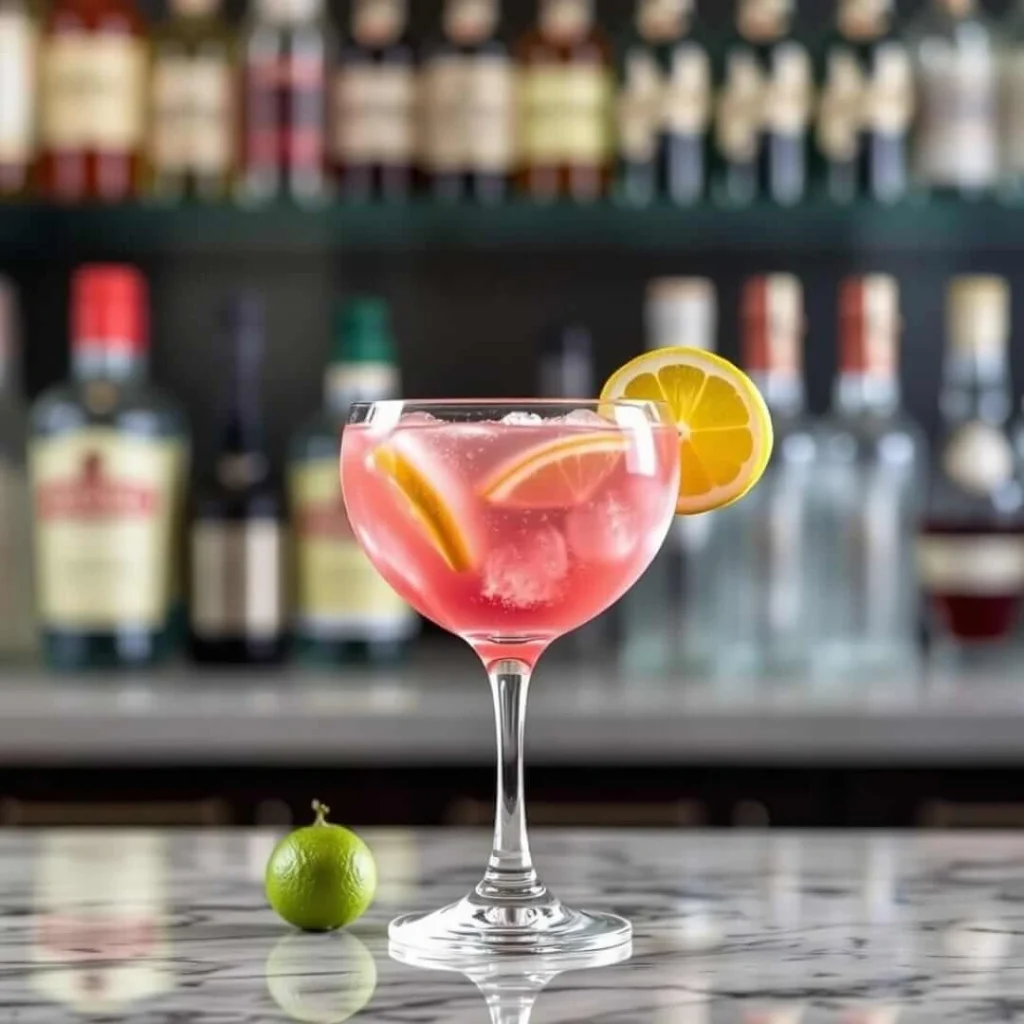
Step-by-Step Preparation
Crafting a Hugo Spritz is a straightforward process that requires just a few simple steps. Here’s how to prepare this refreshing cocktail:
- Prepare Your Glass: Start by selecting a large wine glass or a stemless glass. This will allow you to showcase the layers of the Hugo Spritz beautifully.
- Add Ice: Fill the glass with ice cubes. This is crucial for keeping your drink chilled throughout.
- Prepare the Mint: Take 6 fresh mint leaves and gently clap them between your hands to release their oils and aroma. This step enhances the flavor and fragrance of the mint in your drink.
- Add Mint and Lime: Place the prepared mint leaves into the glass. Add 3 slices of lime for garnish and additional flavor. The lime complements the mint and elderflower notes perfectly.
- Pour in Elderflower Liqueur: Add 1 ounce of elderflower liqueur, such as St-Germain or St. Elder. This gives the Hugo Spritz its signature floral flavor.
- Add Sparkling Water: Pour in 2 ounces of chilled sparkling water or seltzer. This adds a refreshing fizz to the drink without introducing additional sweetness.
- Top with Prosecco: Fill the glass to the top with 6 ounces of chilled Prosecco. Use a dry Prosecco to maintain the drink’s balance and prevent it from becoming too sweet.
- Stir Gently: Use a bar spoon to gently stir the ingredients together. Be careful not to stir too vigorously, as this can cause the Prosecco to lose its effervescence.
- Final Touches: Garnish with an additional mint sprig and a lime slice if desired. This adds a pop of color and freshness to the drink.
Success Markers
- Visual Appeal: The drink should have a pale golden color with visible layers of Prosecco and sparkling water. Fresh mint and lime slices add vibrant colors.
- Flavor Profile: The Hugo Spritz should taste refreshing and floral, with a balance of sweetness from the elderflower and tartness from the lime.
- Texture: The drink should be effervescent, with a lively fizz from the Prosecco and sparkling water.
By following these steps, you’ll create a Hugo Spritz that is both visually appealing and deliciously refreshing. The combination of elderflower liqueur, Prosecco, and mint makes it perfect for warm weather gatherings or any occasion when you want a light, elegant cocktail.
Nutritional Information
The Hugo Spritz is a refreshing and relatively low-calorie cocktail, making it a popular choice for those seeking a lighter drink option. Here’s a breakdown of its nutritional content per serving:
| Nutrient | Amount per Serving | % Daily Value |
|---|---|---|
| Calories | 177-188 | – |
| Total Fat | 0 g | 0% |
| Saturated Fat | 0 g | 0% |
| Cholesterol | 0 mg | 0% |
| Sodium | 4-12 mg | 0% |
| Total Carbohydrates | 17-18 g | – |
| Dietary Fiber | 0 g | 0% |
| Total Sugars | 16-17 g | – |
| Protein | 0 g | 0% |
| Vitamin D | 0 IU | 0% |
| Calcium | 12 mg | – |
| Iron | 0.12 mg | – |
| Potassium | 24 mg | – |
Allergen Information
The Hugo Spritz contains sulphites, which are commonly found in wine and sparkling beverages. It does not contain common allergens like gluten, dairy, eggs, fish, shellfish, peanuts, tree nuts, or soy. However, if you have a sensitivity to sulphites or any other ingredient, it’s advisable to consult with a healthcare professional before consumption.
Safety Precautions
When preparing and consuming the Hugo Spritz, consider the following safety precautions:
- Handling Glassware: Be careful when handling wine glasses, as they can be fragile and prone to breakage.
- Chilling Ingredients: Ensure that all ingredients, especially the Prosecco and sparkling water, are well-chilled before serving to maintain the drink’s effervescence and flavor.
- Responsible Drinking: Always drink responsibly and never consume alcohol if you are under the legal drinking age or if it is unsafe for you to do so.
- Pregnancy and Breastfeeding: As with any alcoholic beverage, it is recommended that pregnant or breastfeeding women avoid consuming the Hugo Spritz.
- Allergic Reactions: If you experience any signs of an allergic reaction after consuming the Hugo Spritz, seek medical attention immediately.
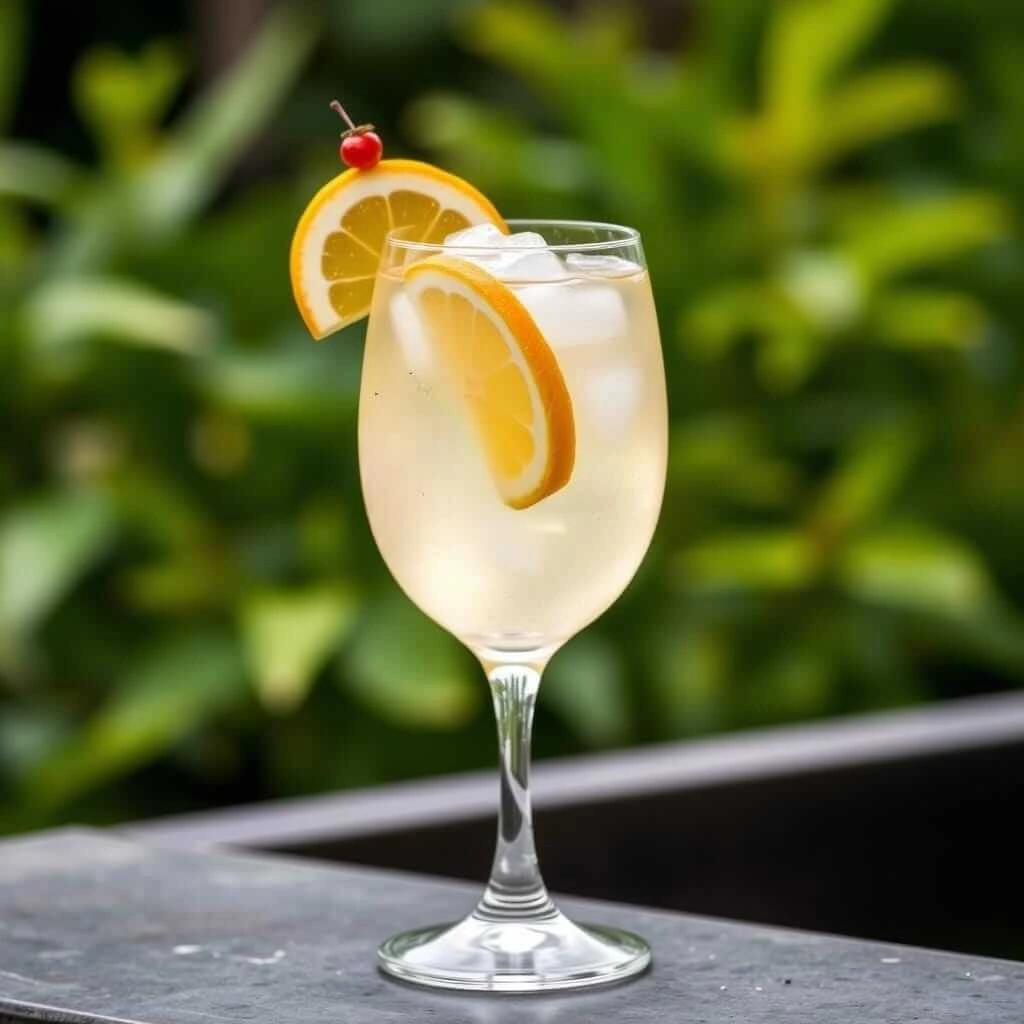
Pro Tips & Tricks
Crafting the perfect Hugo Spritz requires a few expert insights to elevate this refreshing cocktail:
- Quality Ingredients: Use high-quality Prosecco and elderflower liqueur to ensure a refined flavor profile. Opt for a dry Prosecco to balance the sweetness of the elderflower.
- Gentle Stirring: Avoid over-stirring to preserve the effervescence of the Prosecco. A gentle stir will combine the ingredients without losing the bubbles.
- Mint Handling: Gently clap or muddle the mint leaves to release their oils without overpowering the drink. This enhances the aroma and flavor.
- Temperature Control: Ensure all ingredients are well-chilled before serving. This maintains the drink’s refreshing quality and prevents it from becoming watered down.
Serving & Pairing Guide
The Hugo Spritz is a versatile cocktail that pairs well with a variety of dishes, making it perfect for any occasion:
- Complementary Dishes:
- Charcuterie Boards: Prosciutto, speck, and mortadella complement the drink’s delicate flavors.
- Fresh Cheeses: Mozzarella, crescenza, and caprino are excellent pairings.
- Fish Appetizers: Shrimp and pancetta skewers add a delightful seafood touch.
- Presentation Tips:
- Garnish with fresh mint sprigs and lime slices for a vibrant look.
- Use large ice cubes to prevent dilution and maintain the drink’s clarity.
- Serve in a large wine glass to showcase the layers of the cocktail.
Recipe Variations
The Hugo Spritz can be adapted to suit different tastes and dietary needs:
- Dietary Adaptations:
- Non-Alcoholic Version: Replace Prosecco with non-alcoholic sparkling wine and use elderflower syrup instead of liqueur.
- Low-Carb Version: Use sugar-free alternatives for the elderflower syrup.
- Seasonal Versions:
- Strawberry Hugo Spritz: Infuse St. Germain with strawberries for a fruity twist.
- Autumn Hugo Spritz: Add pomegranate juice and muddled figs for a fall-inspired flavor.
- Holiday Hugo Spritz: Incorporate cranberry juice and rosemary for a festive touch.
These variations allow you to enjoy the Hugo Spritz throughout the year, adapting it to suit different seasons and preferences.
Storage & Reheating Guide
Since the Hugo Spritz is a chilled cocktail, storage and reheating aren’t typically applicable. However, here are some tips for managing its ingredients:
- Elderflower Liqueur: Store in a cool, dark place. It does not require refrigeration but should be kept away from direct sunlight.
- Prosecco: Store unopened bottles in a cool, dark place. Once opened, it’s best consumed within a few days to preserve its effervescence.
- Fresh Mint and Lime: Store in the refrigerator to keep fresh. Use within a few days for optimal flavor and aroma.
Troubleshooting Guide
If you encounter issues while preparing your Hugo Spritz, consider these troubleshooting tips:
- Flat Prosecco: Ensure that your Prosecco is well-chilled and consumed within a few days of opening. If it’s flat, it may be past its prime.
- Overpowering Mint: Use fewer mint leaves or avoid muddling them too aggressively to prevent the mint from overpowering the other flavors.
- Too Sweet: Adjust the amount of elderflower liqueur to your taste. If it’s too sweet, reduce the amount slightly.
Common Mistakes
When making a Hugo Spritz, avoid these common mistakes to ensure your drink turns out perfectly:
- Over-Stirring: Avoid stirring the drink too much, as this can cause the Prosecco to lose its effervescence.
- Insufficient Chilling: Ensure all ingredients are well-chilled before serving to maintain the drink’s refreshing quality.
- Poor Quality Ingredients: Use high-quality Prosecco and elderflower liqueur to achieve the best flavor profile.
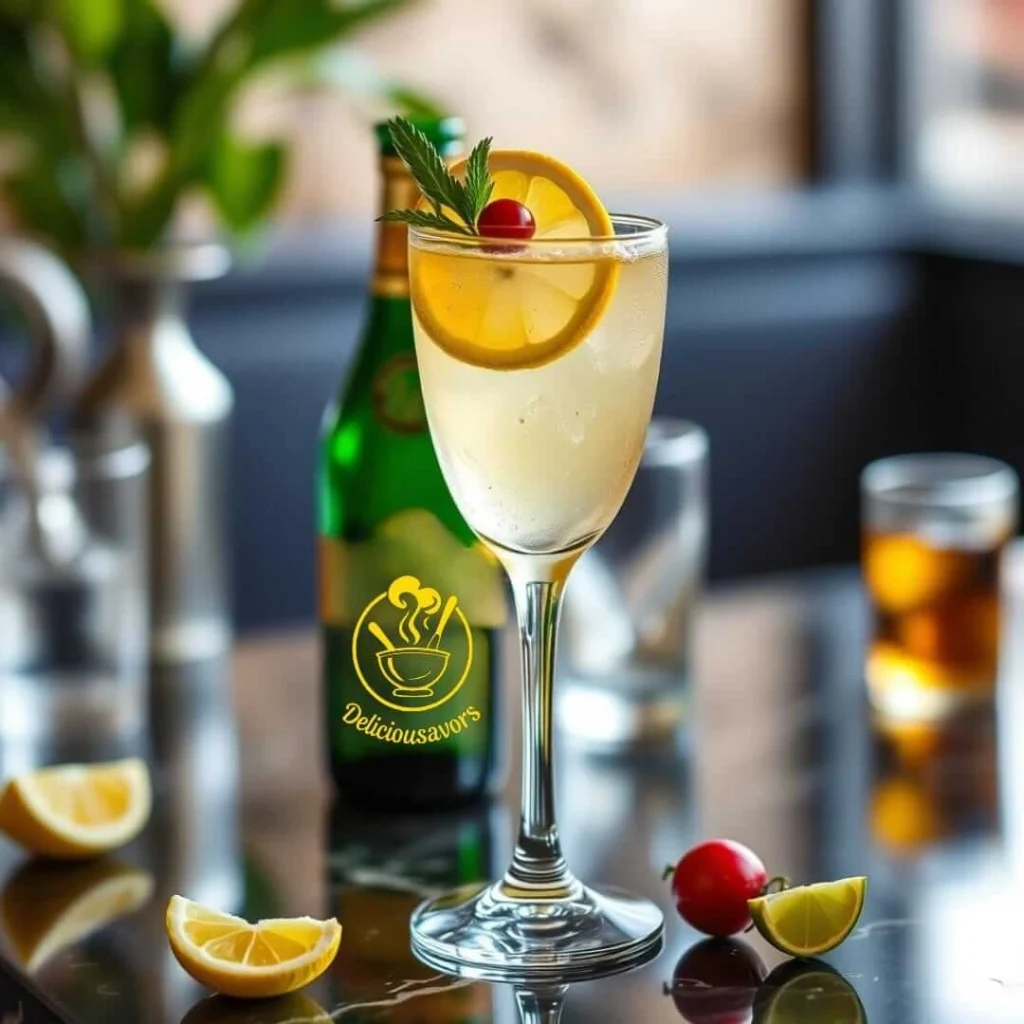
Frequently Asked Questions
Here are some common questions about the Hugo Spritz, along with their answers:
Q: What is the origin of the Hugo Spritz?
A: The Hugo Spritz originated in South Tyrol, Italy, in 2005. It was created by bartender Roland Gruber as an alternative to the Aperol Spritz.
Q: Can I make a non-alcoholic version of the Hugo Spritz?
A: Yes, you can make a non-alcoholic version by substituting the Prosecco with non-alcoholic sparkling wine and using elderflower syrup instead of liqueur.
Q: What type of Prosecco should I use?
A: Use a dry Prosecco to balance the sweetness of the elderflower liqueur.
Q: How do I prevent the Prosecco from going flat?
A: Ensure that your Prosecco is well-chilled and consumed within a few days of opening. Store it in the refrigerator to preserve its effervescence.
Q: Can I use other types of sparkling wine?
A: While Prosecco is traditional, you can experiment with other sparkling wines like Cava or Champagne for a different flavor profile.
Q: How do I adjust the sweetness of the Hugo Spritz?
A: Adjust the amount of elderflower liqueur to your taste. If it’s too sweet, reduce the amount slightly.
Fun Facts & Trivia
- Name Origin: The Hugo Spritz was initially named “Otto” but was later renamed “Hugo” by its creator, Roland Gruber.
- Cultural Significance: The Hugo Spritz represents a modern twist on traditional Italian aperitifs, reflecting the evolving tastes of the region.
- Global Popularity: Despite its origins in South Tyrol, the Hugo Spritz has gained international recognition and is enjoyed worldwide.
Conclusion
The Hugo Spritz is a refreshing and elegant cocktail that has captured the hearts of many with its delicate balance of flavors. Whether you’re hosting a summer gathering or simply looking for a lighter alternative to traditional aperitifs, the Hugo Spritz is an excellent choice. With its easy preparation and versatility, it’s perfect for any occasion. Feel free to experiment with variations and pair it with your favorite dishes to enhance its unique flavor profile.
If you’re ready to elevate your cocktail game with this Alpine delight, start by gathering high-quality ingredients and following the simple steps outlined above. Share your Hugo Spritz creations with friends and family, and don’t hesitate to reach out if you have any more questions or need further inspiration. Cheers to crafting the perfect Hugo Spritz!

